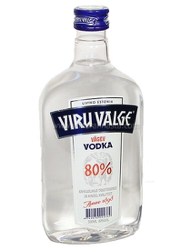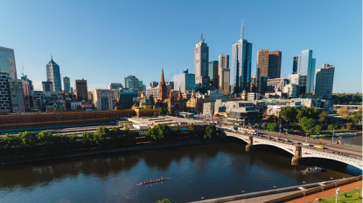October 11th, 2019

Not only has Finland been in the news recently, with its President visiting the US but the 2019 meeting of EAIE (European Association of International Educators) was also held last month in Helsinki, the country’s capital. We’ve decided to put the spotlight on Finland in this week’s blog post and share some fun facts about this Nordic country. We’ve also invited ACEI’s President and CEO, Jasmin Saidi-Kuehnert, who was in Helsinki for the EAIE conference to share her perspective.
1. Happiest Country in the World

Image: REUTERS/Petr Josek
The latest World Economic Forum report ranks Finland as the happiest country in the world. Finland has climbed from number 5 to number 1.
Jasmin: “I can vouch for this ranking. During my recent visit to Helsinki where I was attending the EAIE conference, not once did I experience an unpleasant encounter with a Finnish person. Every person I met, whether at the hotel, taxi drivers, restaurant workers, shop keepers, and even locals, greeted me with smiles and genuine hospitality. I always felt welcomed. On my first evening in Helsinki, my hotel recommended my husband and I who was also traveling with me, to check out a restaurant known for its authentic Finnish cuisine. It was clearly a popular venue as there were quite a few people lined up ahead of us waiting for a table. As we inched our way closer to the host, a young man approached us and invited us to join him and his party rather than stand in line. We gladly accepted his invitation and joined his party which included a number of Finns and Italians. They were in Helsinki to attend the “No Labels, No Walls” event that weekend. We spoke at length with our new Finnish friends about life in Finland and they had nothing but positive things to say. They all agreed that in order to coexist as they did, some compromises had to be made, but overall they followed the Finnish ethos where taking care of one another is embraced as an important aspect of their social construct.”

The top 20 happiest countries 2019 Image: World Happiness Report 2019
2. Minimum Wage and Average Salary

The minimum wages in most professions in Finland is among the highest in the Eurozone. The average salary in Helsinki is around net € 2,500 euros per month. Although Helsinki has the highest salaries in Finland it also has the highest cost of living when it comes to property and rent prices. But, compared to its Nordic neighbors such as Sweden and Norway, its cost of living is considerably lower.
Jasmin: “When I asked my taxi driver if Uber (the ride sharing service) is popular in Helsinki, he said “no.” When I asked him why, he said that people in Finland make a good living thanks to the living wage and don’t need to have a second job.”
3. The Sami (Lapp) People

Image: stock photo Google images
The first inhabitants of Finland were the Sami (Lapp) people who were there when the first Finnish speakers migrated in during the first millennium B.C. The Lapps moved north into the section that is today known as Lapland.
Jasmin: “I took a taxi from my hotel in the City Center of Helsinki to the convention center or locally known as Messukeskus. When I asked the driver if she was from Helsinki, she told me she was from Lapland. How great is that?! It’s not every day one meets someone claiming to be from this enchanting place where, as children, we were told Santa Claus lived!”
Spanning 30% of Finland’s land area, Lapland is home to just 3% of its population. Lapland’s far north is known as Sápmi, home of the Sámi, whose main communities are around Inari, Utsjoki and Hetta. Rovaniemi, on the Arctic Circle, is the most popular gateway to the north.
Jasmin continues: “In the 15-minute drive to the convention center, my driver took me on a virtual journey of her idyllic birthplace. She spoke of the midnight sun, the Sámi peoples, the aurora borealis (Northern Lights) and roaming reindeer, the magical snowy winters, the sense of space, big skies and pure clean air.”
4. Saunas: “The poor man’s pharmacy”

Image: stock photo Google images
Finns are fanatic about their saunas. With a population of 5.4 million, Finland has over 3 million saunas. It is said that there are more saunas than cars in Finland. Dubbed the “poor man’s pharmacy,” the sauna is not a luxury but a substantial part of Finnish culture and national identity. The only Finnish word to make it to the English language is ‘sauna.’
Jasmin: “Yes, I did enjoy a few minutes of heat and serenity at the hotel’s sauna. We heard that even a Burger King in Helsinki has a sauna which gives a burger, fries with a side of sauna, a whole new meaning!”
5. Free Education
Finland offers free education at the elementary, secondary and even university levels. This free access is also offered to students from the EU/EES. It is no wonder that Finland is ranked number one as the happiest country in the world.
And one more thing, non-EU students can also benefit from free education if they take classes that are taught in Finnish or Swedish or complete doctoral studies in any language. Oh, by the way, in Finland, when someone earns this PhD, they receive a top hat and a sword!

Image: stock photo Google images
6. First European Country to Give Women the Right to Vote

Thirteen of the 19 women elected to Parliament in 1907. Photo: Helsiniki City Museum
In 1906, Finland became the first country in Europe that gave women from all levels of society the right to vote and stand for parliament. Finland had its first female prime minister (Anneli Jäätteenmäki) in April 2003 which made it the only country in Europe with both a female president (Tarja Halonen) and prime minister.
7. Prohibition and Consumption of Alcohol

Image credit: Jasmin Saidi-Kuehnert
Just like the U.S., Finland had its own temperance movement that led to the prohibition of alcohol from 1919-1932. Of course, this didn’t stop the Finns from making their own brew and households were known to have perfected moonshining. Smuggling of alcohol into the country was also par for the course. Today, you can only purchase beer and cider in supermarkets throughout Finland. Wine and other spirits can be purchased at state-sanctioned stores. In restaurants, if you order anything but beer by the glass you need to specify the size in terms of liters. There are several speakeasies in Helsinki.
Jasmin: “On a boat ride around the islands near Helsinki, the Captain told us the story of one famous smuggler who during WWII had turned to smuggling about 150 Jewish people from Nazi Germany to safety.”
8. Finnish Language is Unique

Source: Pixabay
The Finnish language is part of the Finno-Ugric language group and is said to be similar to Estonian than the Scandinavian languages such as Danish, Norwegian and Swedish. It is not even an Indo-European language but belongs to the Uralic language family. Finnish uses gender-neutral words in their language.
Jasmin: “I made it a point to learn the 3 basic words of saying hello, goodbye and thank you in Finnish. The word for hello is hei or moi, and goodbye is hei hei or moi moi, and thank you is kiitos, though everyone we met in Helsinki was fluent in English and would respond with a pleasant smile when I’d say any of these words in Finnish.”
The Finns love their language so much that they celebrate it each year on the 9th of April. To learn more about this special day, click here
9. The Land of the Midnight Sun and Aurora Borealis

Image: Stock photo Google images
A quarter of the country is in the Arctic Circle which puts Finland’s Lapland and other northern sections in what is known as the “Land of the Midnight Sun”. The sun in this area doesn’t set for 73 consecutive summer days annually while it doesn’t rise at all for 51 days during the winter (known as polar night). Except for the summer, the Aurora Borealis (Northern Lights) are seen regularly in every season in Lapland and other parts of Finland
Jasmin: “My taxi driver who was from Lapland said that she loved the long nights and long days. She said that to her these were what made her region so special and unique.”
10. General Country Facts
- Total Population: 5.4 million
- Capital: Helsinki
- Land area: 338,424 km2
- Government: Republic, parliamentary democracy
- President: Sauli Niinistö
- Primary minister: Juha Sipilä
- Currency: Euro
- Official language: Official languages are Finnish (spoken by 88.9%) and Swedish
- (5.3%). Sami is also recognized as a regional language.
- Official Website: Finland.fi
- Member of EU: Yes.
- Member of NATO: No
Source: https://www.swedishnomad.com/facts-about-finland/
Bonus Fun fact:
11. Least Corrupt and Most Transparent

When it comes to the reporting of the news, Finland is by far the most honest and transparent. This is mostly due to its commitment to equal rights and emphasis on transparency. Finland’s press has been rated the freest one in the world. Transparency International, based in Berlin, has rated Finland since 1998 as the world’s least corrupt country as is its reporting of domestic and international news. If you’re looking at alternative fact-based non-partisan reporting of international news, best you turn to the Finnish press, such as Helsinki Times.

Jasmin Saidi-Kuehnert is the President and CEO of the Academic Credentials Evaluation Institute (ACEI).
The Academic Credentials Evaluation Institute, Inc. (ACEI), was founded in 1994 and is based in Los Angeles, CA, USA. ACEI provides a number of services that include evaluations of international academic credentials for U.S. educational equivalence, translation, verification, and professional training programs. ACEI is a Charter and Endorsed Member of the Association of International Credential Evaluators. For more information, visit www.acei-global.org.






















































